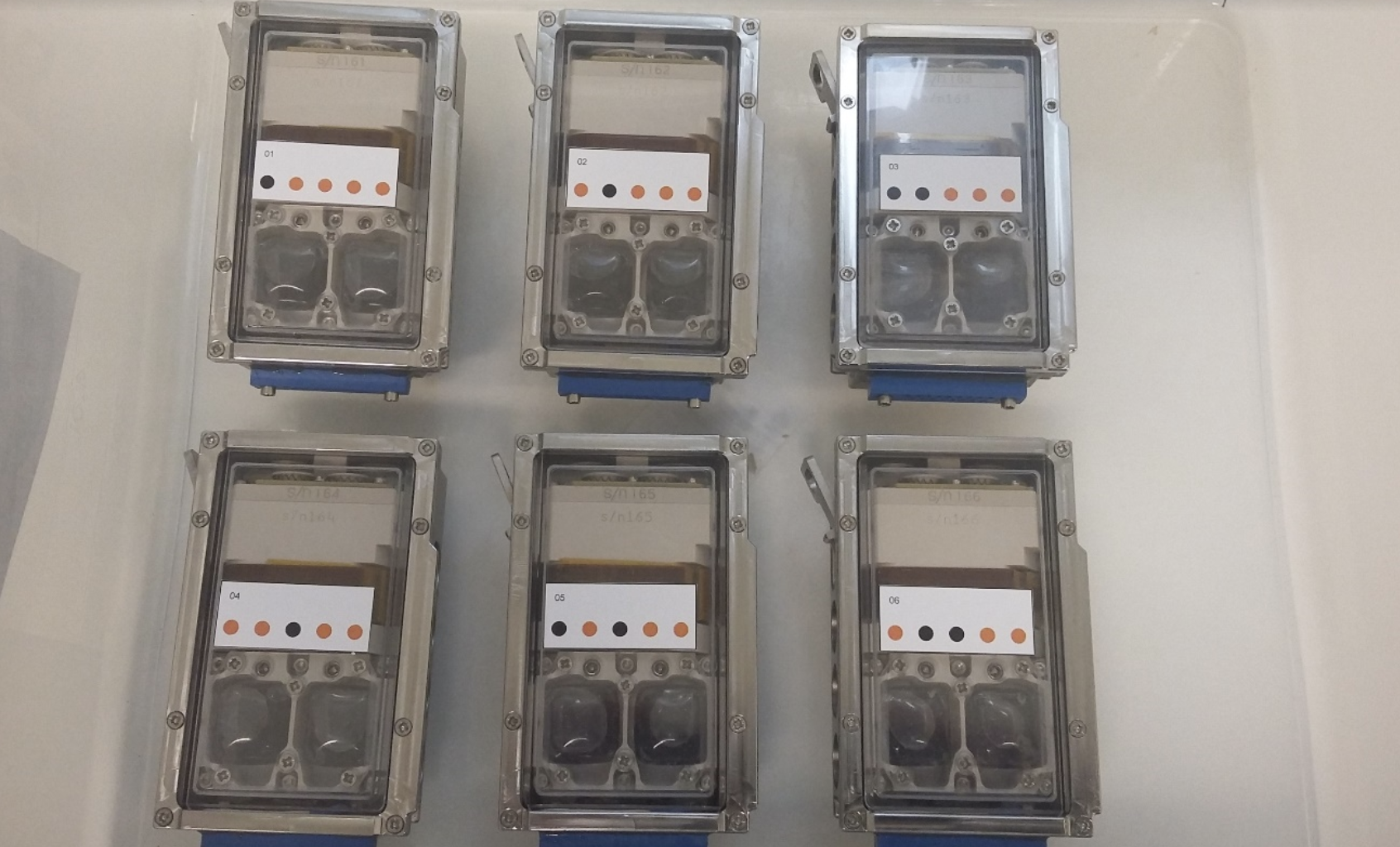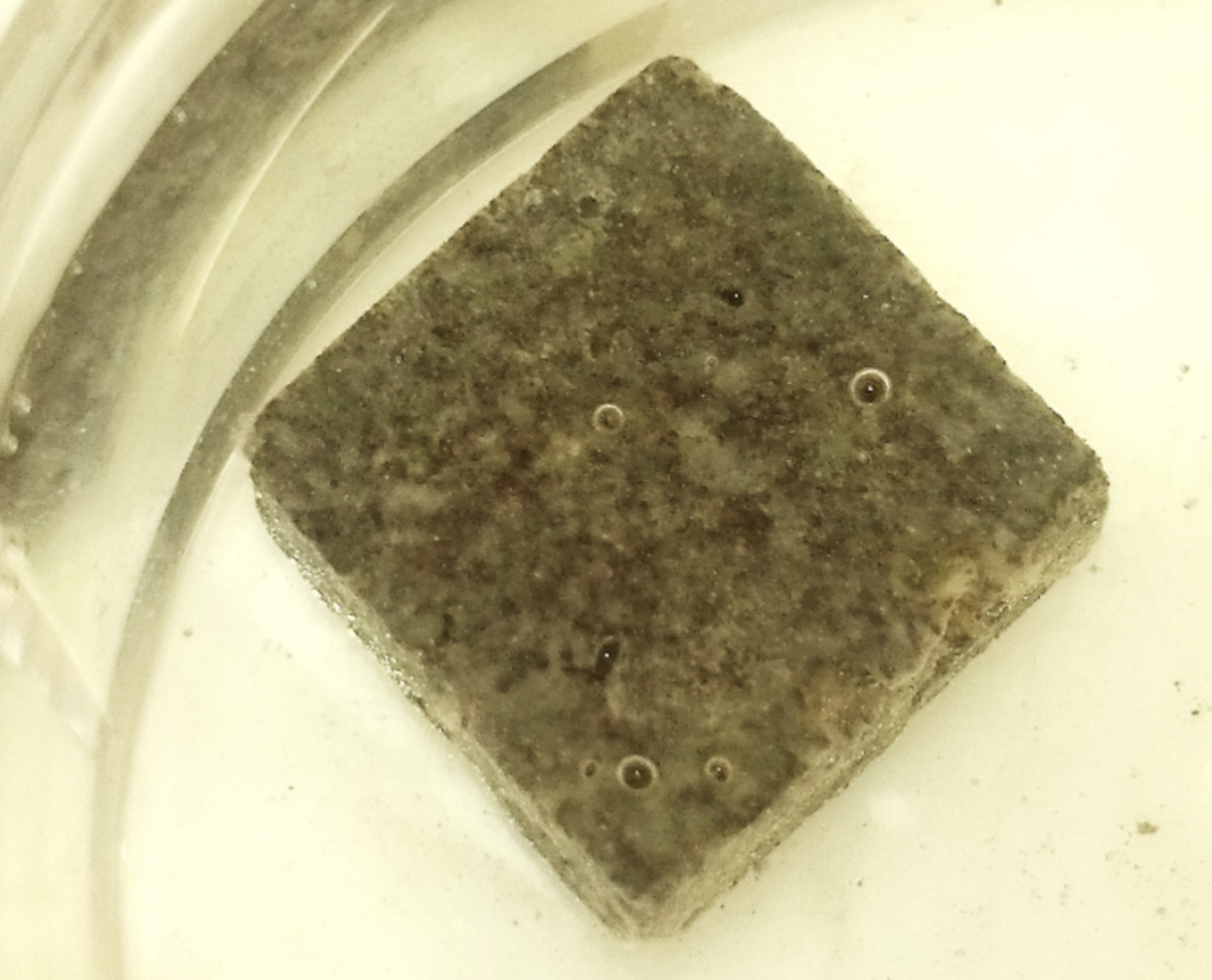If humans ever want to establish a base on the Moon, Mars, or in deep space, they may need to mine local rocks to support themselves. Now a team of scientists is taking a first step toward finding out whether rock-chowing bacteria can lend a hand.
On Tuesday, astronauts on the International Space Station fired up a series of miniaturized reactors that’ll allow them to grow specialized bacteria capable of extracting resources from rocks here on Earth. The experiment, called Biorock, seeks to learn whether the microbes’ abilities are altered in low gravity conditions—and ultimately, whether these tiny miners can help support a future off-Earth base.
On Earth, microbes are already used in so-called “biomining” applications; helping humans to extract metals like copper, iron, and gold from rocks or mining waste. Biomining bugs have a special ability to thrive on rocks, often forming tough mats called biofilms and releasing acids that help liberate metals. If we were to harness them for mining asteroids or rocks on Mars, that could reduce the need to ship mining chemicals from Earth, Charles Cockell, an astrobiologist at the University of Edinburgh and principal investigator for Biorock, explained to Motherboard.
But before we start shipping microbes across the Solar System, we need to know if they’re really up for the space mining gig. To that end, Biorock will investigate how microbial biofilm formation and biomining change outside of Earth’s gravity well.

Three types of bacteria, all of which live in close association with minerals or metals on Earth, were selected for the experiment. Now that they’re in orbit, astronauts are growing them on small slabs of rock inside a series of roughly 4-inch bioreactors that simulate Earth gravity (1-g), Martian gravity (0.38-g) and microgravity conditions. After three weeks, a chemical fixative will be added to stop growth and preserve the bacteria. The bioreactors will then be returned to Earth, where scientists will examine the biofilm formation patterns and analyze how much “bioleaching,” or extraction of various elements, occurred. The microbes’ performance in space will be compared with the results of similar experiments run on Earth.
Cockell said that because low gravity can impede fluid mixing “we hypothesize the bacteria will become more stressed and the biofilms will change.” But the researchers aren’t sure what direction those changes will take. Previous studies have shown that certain microbes, like the pathogen Pseudomonas aeruginosa, can grow more vigorously and form never-before-seen structures in space. Beyond space mining applications, a better understanding of those changes could help astronauts figure out ways to stop biofilms from mucking up equipment and life support systems.
One limitation of the experiment is that the microbes are being grown on an Earth rock—igneous basalt. While basalt was chosen in part because it’s also prevalent on Mars and the Moon, Mike Malaska, an astrobiologist at NASA’s Jet Propulsion Laboratory, told Motherboard it’s possible that some of the trace elements, minerals, and structures on asteroids might be different in ways that affect biofilms.

That said, Malaska felt the researchers had designed “a nice set of initial experiments” that will answer “some very basic questions about biology.” And Cockell said his group has funding to fly the experiment again in two years using actual space rocks—probably meteorite material sourced from national museums.
So while the dream of colonizing Mars remains a distant one, perhaps the scaled-down dream of sucking valuable metals out of asteroids, or turning a patch of the lunar regolith into soil to grow some space veggies, isn’t too far off.
from VICE https://ift.tt/2GHMrBB
via cheap web hosting
No comments:
Post a Comment